
We caught up with Alison to congratulate her and ask her about her love of knitting and the inspiration behind the Buggiflooer design.
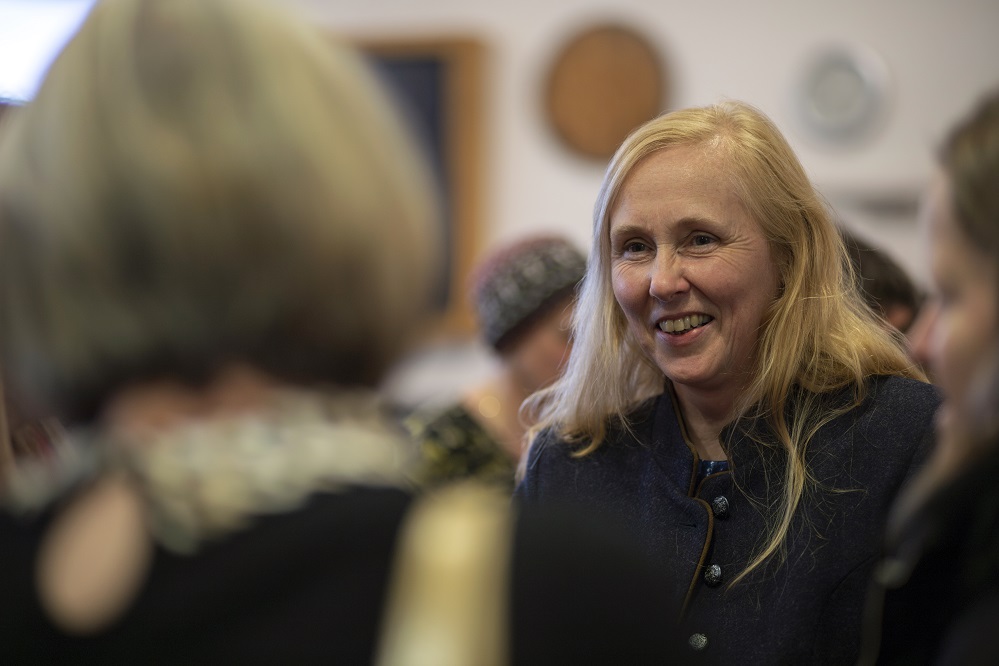
You come from a family of knitters, but when did you learn knitting? Who was your biggest inspiration?
My nan taught me to knit when I was about five years old. She was, and still is, my biggest inspiration. She taught me to knit riggies and then I progressed to making peerie cats. I learnt a lot by watching her nimble fingers and she also had me involved by winding yarn from hanks, cutting out the foam for the pill box hats. I can still wind a really good cloo! In addition, I was lucky enough to receive knitting lessons at school as part of the curriculum. My knitting teacher Florence Shearer was a big influence. She taught me Fair Isle knitting at about age nine.
Tell us what knitting means to you and why you share your skills?
Knitting is a great relaxing therapy for me and has seen me through tough times! It is easy to become absorbed in a world of my own, especially in fair isle colourwork. I often think about the many, talented Shetland maakers of the past, most of whom have gone unrecognised and this is what drives me to share my skills. I believe it is important to keep Shetland and Shetland maakers on the map.
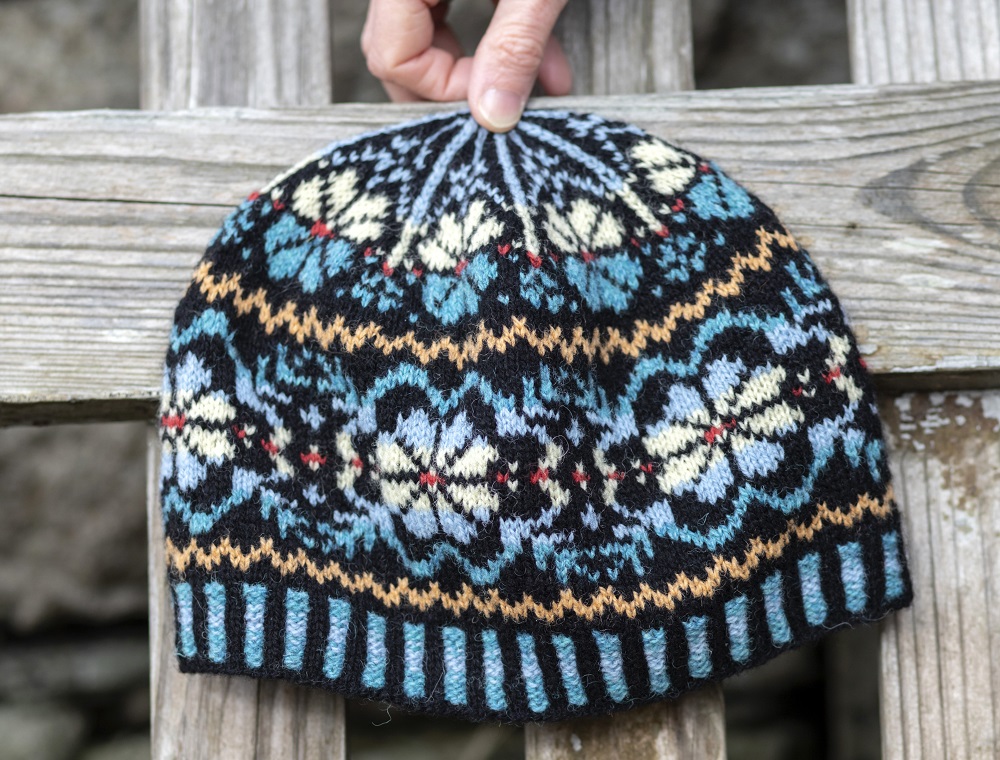
Tell us about your hat for SWW 2023 – what inspired it, the different motifs, the name?
I wanted the design to have traditional elements but also to stand out as being unique for SWW 2023. Many fair isle knitting motifs are based on either stars or flowers and I love both. I chose a flower for this design and named it the Buggiflooer Beanie. Buggiflooer is the Shetland word for sea campion which grows in abundance around wir hoose by the sea in big, healthy clumps. It’s delicate, peerie white flooers somehow defying wind and waves much like our islands’ inhabitants. I like to support Shetland language and culture by using Shetland words in my designs. This practice helps keeps them alive both in usage and understanding, bringing them back into the forefront of people’s minds.
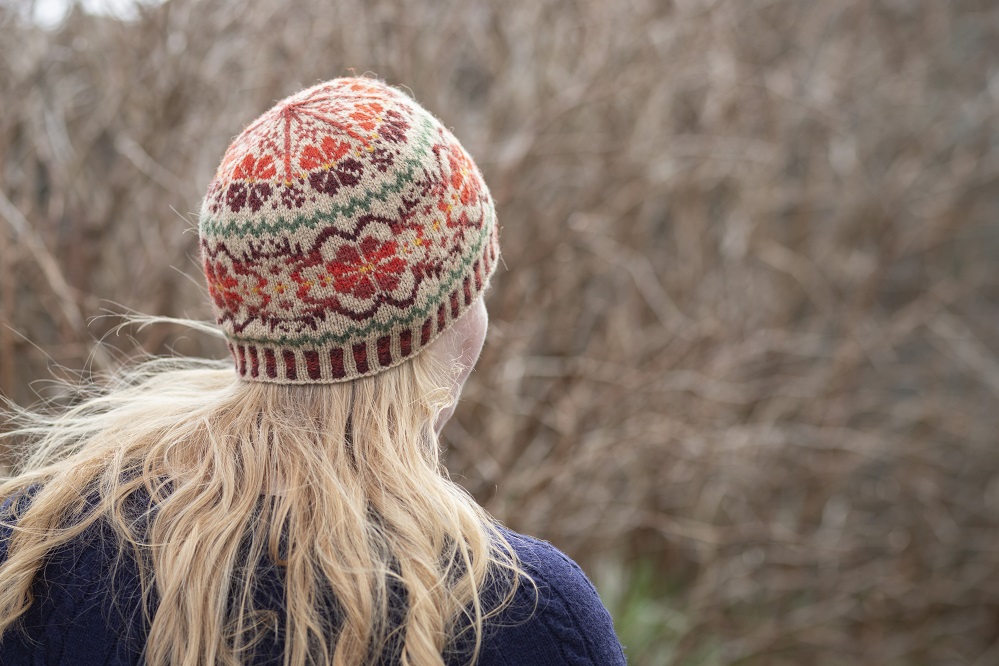
Did it take long to come up with the different colourways?
Yes it did! Playing with colour is normally my favourite part of Fair Isle knitting but this time it took me longer than usual due to the additional pressure of doing it for SWW! I knitted about 20 hats in the process and kept thinking that they were ok but could be improved. Each of the Shetland yarn producers colours are very different to work with and what colour palette worked for one didn’t necessarily work for the other.
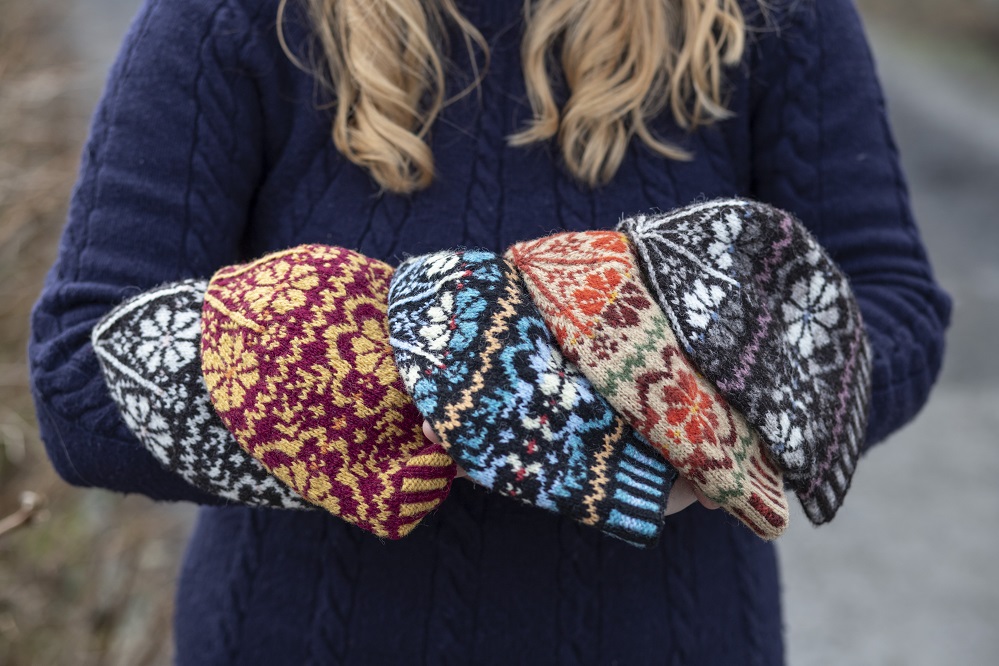
What made you do a two-colour version?
I worked on the original hat design in black and white so actually the two-colour version was done first. I then went on to add the colours but I still liked the striking contrast of the first version. I’m always intrigued by the differences between Shetland and Norwegian knitting. Shetland maakin is more about colour blending but in Norway you notice bold two-colour contrast so I’ve tried to include both.
I also thought that 2 colour version might be easier for those new to Fair Isle knitting or those who had limited access to the full range of Shetland yarns.
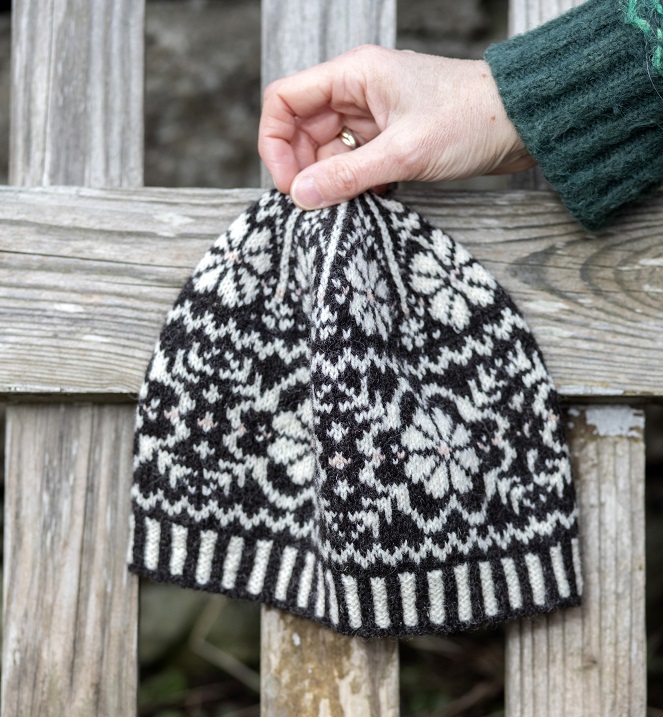
Would you say it is an easy or a challenging knit?
I think it’s a relatively straightforward knit and a well explained SWW pattern. It uses one background colour only which keeps it simple.
What’s your basic design process?
I design on the wires without much thought of the paperwork that comes next. Shetlanders have been taught from young to knit and design at the same time and they don’t even realise that they are designers. As a child you were given wires and two colours of yarn to start with and left to figure out what to do. Nowadays, I usually head to my graph book that I have added to and adapted over the years. Many of the fair isle motifs in there have been handed down from previous generations of my family in Cunningsburgh and Fladdabister. I work out the number of loops I need and lay out some colours I feel inspired by and then design as I go on the wires. Unfortunately for me much of my inspiration comes to me in the middle of the night. I wake up dreaming the most amazing designs and colourways but often they’re gone by morning!
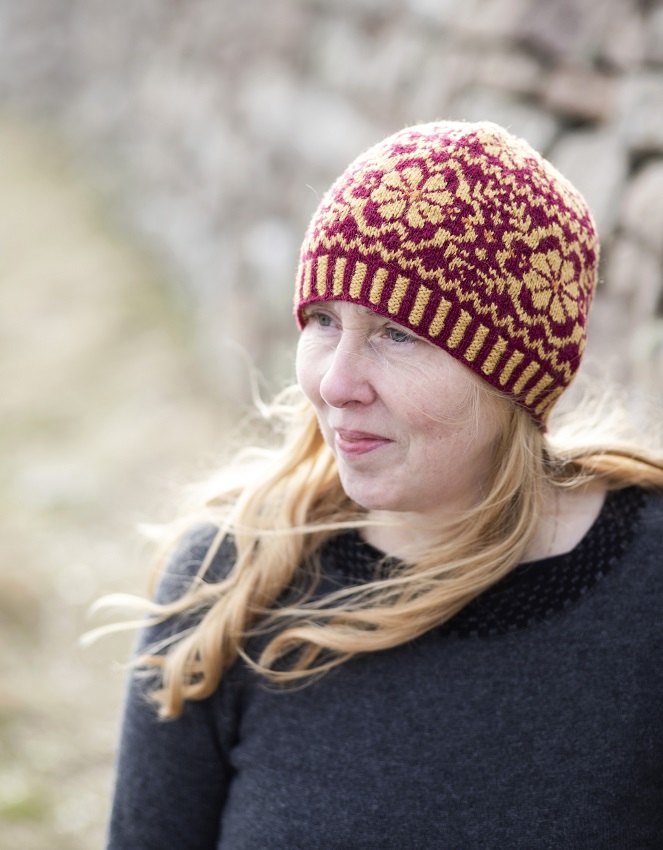
Any specific design elements you would like to emphasise?
I like two colour ribbing; it’s often seen as more of a bother then single colour ribbing however, it makes a far more interesting start to a garment and you can introduce the colours you are going to use further on in the design. In my hat designs I typically like to do a large pattern, bordered by matching peerie patterns and a crown that links in some way to the main body.
What do you like about knitting with Shetland wool?
Shetland wool is a remarkable natural fibre. It is warm in winter and needed in Shetland summers also! It is self – cleaning so little washing is required. There are so many colour choices and it has sticky qualities that do not spret (fray) when cut.
You have used a particular style on the crown in having half your flower in one colour, and the other half a different colour when you would more usually see a mirror image – why did you choose to do that?
I do love the traditional symmetry of fair isle knitting and I most often stick to this. Typically, I like to blend the colours to the centre and try to achieve a glow in the middle. It is also okay to break away from tradition and experiment a little so I decided to mix it up a bit on the crown. It seemed fitting to have a bigger contrast between the two halves of the Buggiflooers and I wanted a bright pop of colour in the centre.
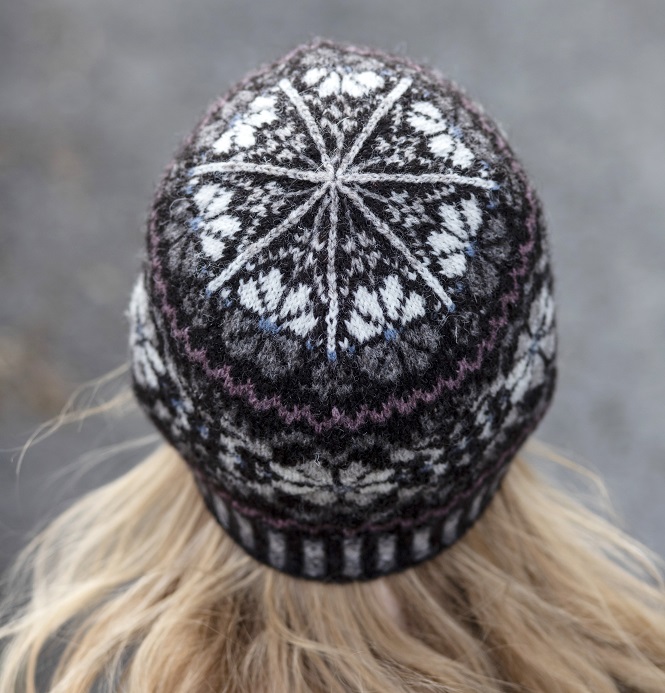
And the pop colour – this is a traditional design tool, can you you talk us through why you use it and what you feel it adds to the designs?
Shetland fair isle knitting is very much all about the blending of colour and avoiding the bold stripe look. Once this has been achieved, I often like to add a line of contrasting colour in the centre of the design. It only needs to be a small amount, but this often seems to lift the design bringing a flat piece of work to life. I continued this idea in the two-colour version by added 2 single rows of a colour pop which elevated the design.
There is a lovely repeat of buggiflooer – used in the body in the bigger pattern and again on the crown – did you design the crown around the flower motif?
Yes, I enjoy designing crowns and I like them to link to the main design of the hat in some way, therefore creating a cohesive design. In this design I used the flower motif as my starting point in the crown. Getting the crown right was one of the reasons I did so many prototype knits!
Apart from your hat, what’s your favourite (own) design so far?
Probably the ‘his and hers’ ganseys I made for Kevin and I. They are traditional looking ganseys made in neutral greys and fawns with a pop of blue. As well as being warm and comfortable to wear they are also striking. Kevin tries to convince me it is romantic, however, it can be a bit embarrassing for me to walk along da street matching!
All of your designs are made using Shetland wool. What are the merits of Shetland wool to you?
In my view you achieve the best fair isle knitting using Shetland wool. This is because there are hundreds of colours to choose from giving you so many opportunities for colour blending. Also, once the wool has been washed and dressed, stitch definition disappears to some degree (especially if you’re a close knitter like myself!) and it becomes almost fabric like. I like the idea that I can see the wool growing on the sheep in the fields around me and that will become the wirsit I will use. If it keeps sheep warm in a Shetland winter then it is the obvious choice to keep wis warm as well.
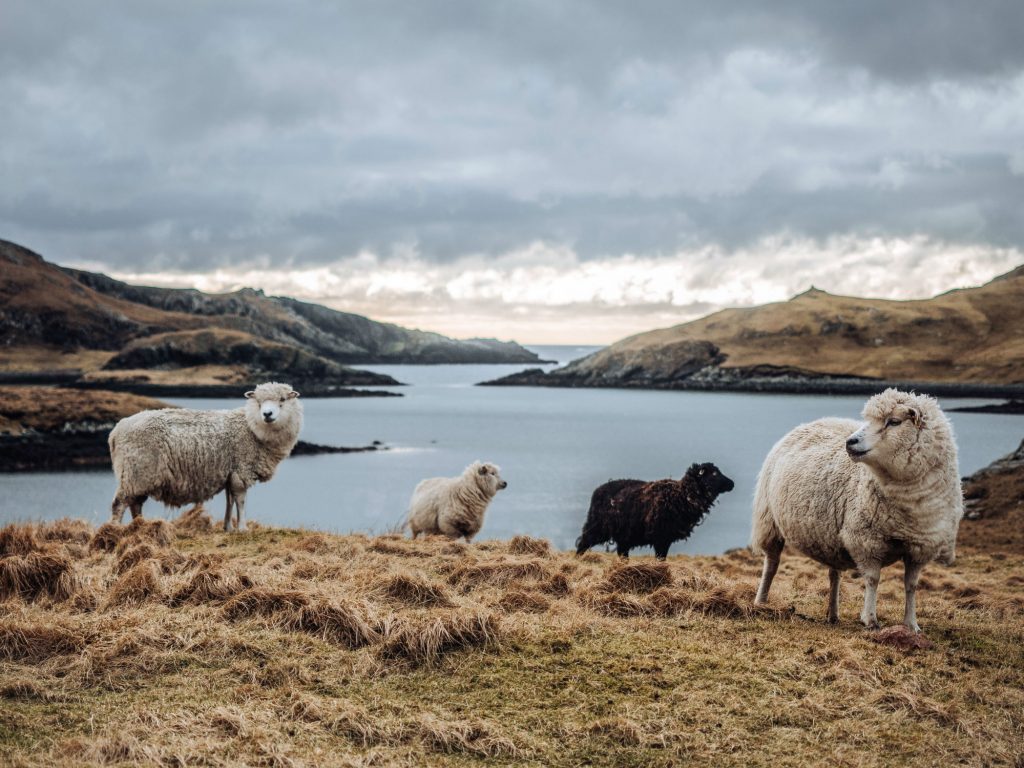
What is the best bit of advice that you would give to a beginner knitwear designer?
Practice and keep practicing. The more you knit the more you learn and this helps you to get to know your colours really well. It often involves a lot of trial and error.
What are you looking forward to most about being Patron this year?
I’m proud of the opportunity to share my island’s heritage, culture and artistry with the rest of the knitting family. Fair isle maakin was borne out of necessity due to the hardship of the life here and the need for extra income. Nowadays it’s great to see that Shetland maakin has turned into a global craft and that Shetland maakers now have the chance to share their skills and knowledge with the rest of the world. SWW provides Shetlanders a fantastic platform to do this.
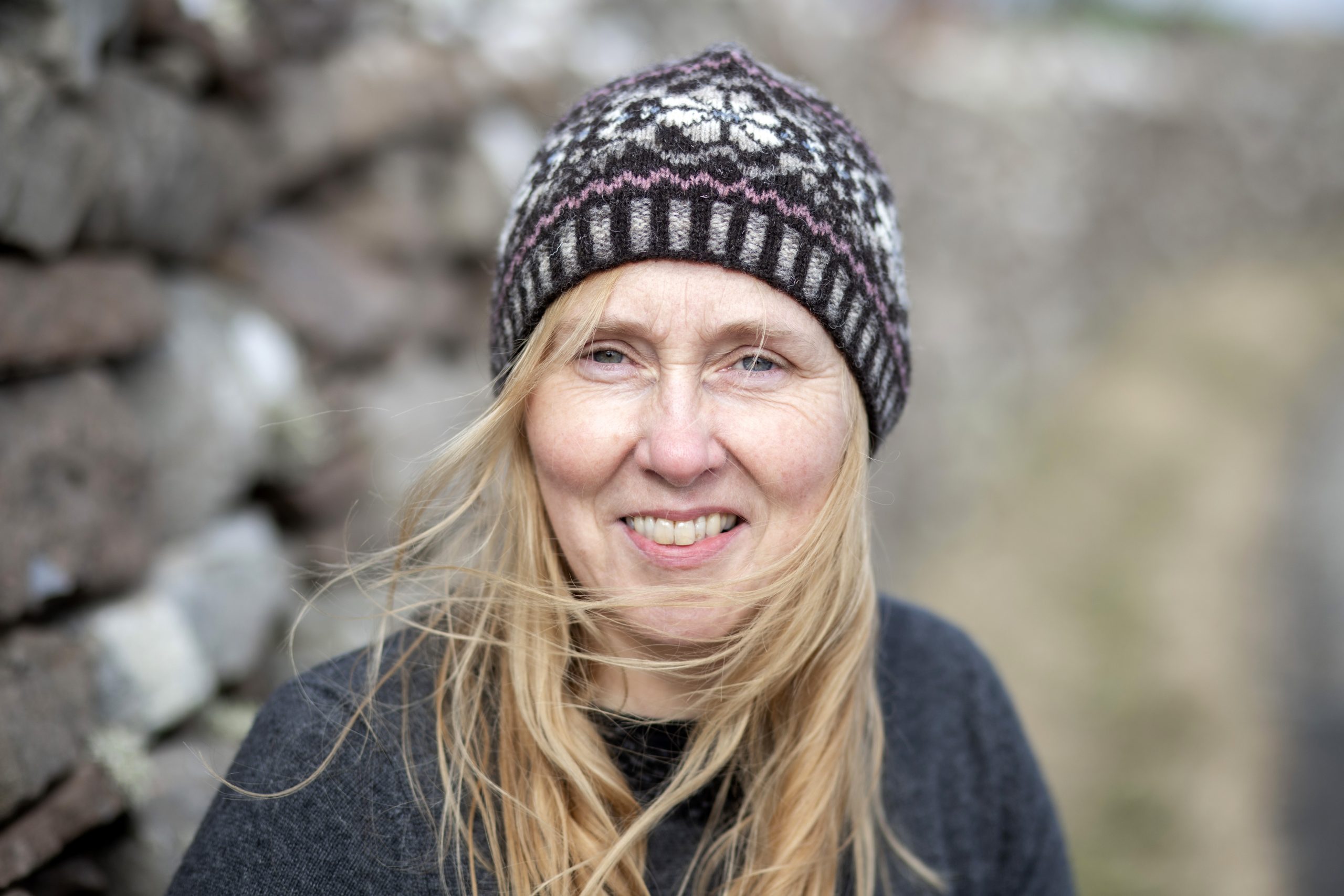
Thanks to everyone for your enthusiasm and support. It keeps us motivated – we’re getting very excited for this year’s event now!